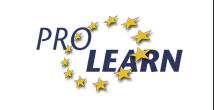Putting Ideas to Work
Putting Ideas to Work is a recent article by Thomas H. Davenport, Laurence Prusak and Bruce Strong published at Sloan Review.
The authors point to the problems of traditional knowledge management (KM) and write:
Over the past 15 years or so, many large organizations have embraced the idea that they could become more productive and competitive by better managing knowledge—the ideas, insights and expertise that originate in the human mind.
In practice, however, some of them are still struggling to make it work. Their knowledge-management efforts, while useful in some ways, haven't necessarily led to better products and services, more effective employees or superior work processes.
What went wrong? Some firms stumbled by focusing their knowledge-management efforts solely on technology at the expense of everything else, while others failed to tie knowledge programs to overall business goals or the organization's other activities. A new approach is needed if knowledge management is to transition into a more pragmatic discipline, one that can be used to improve specific job functions and work processes.
To overcome this problem, the authors then suggest three knowledge-related activities, namely knowledge creation, knowledge dissemination, and knowledge application.
The authors also note that learning and KM have been kept separate from an organization structure point of view. As they put it:
In the past, most companies treated knowledge and learning as separate entities. These functions were managed by different departments, and the groups didn't coordinate their activities or work toward the same business objectives.
That is starting to change. A survey of 20 high-performing businesses conducted in 2006 provided strong evidence that learning and knowledge initiatives increasingly are being intertwined and targeted at mission-critical work forces.
I've written about the deficiencies in traditional learning and KM initiatives and the challenge of the fusion of the two domains. These ideas are dicussed in this article addressing the view of learning and KM as two sides of the same coin (article available for free).




